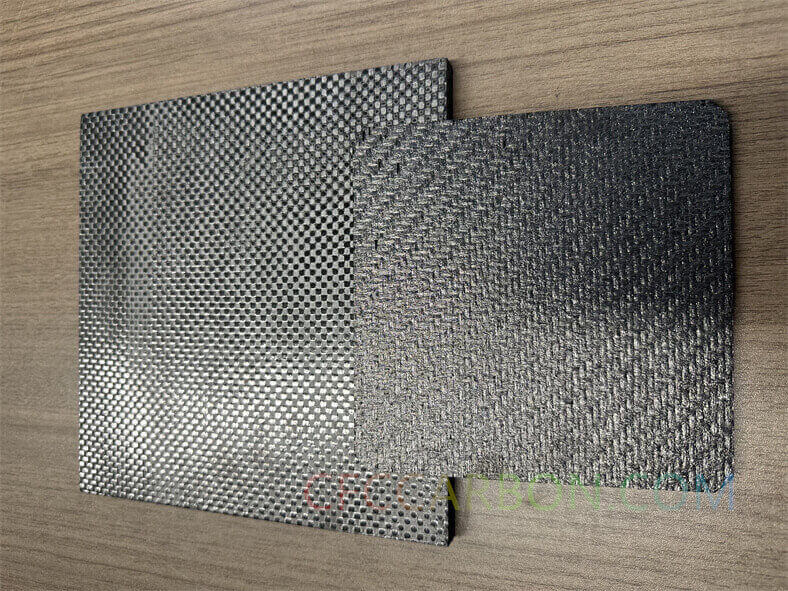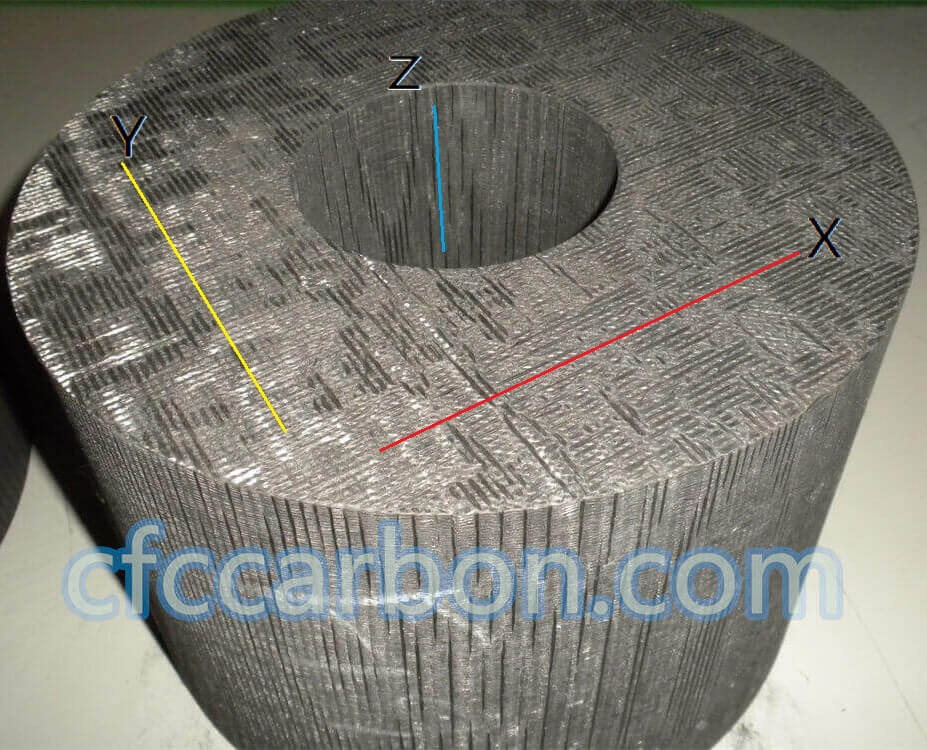Two-dimensional reinforcements:
2D carbon composites can be fabricated from unidirectionally reinforced prepreg material in which individual plies or fabrics are stacked in

carbon fiber composite plates sheets U L profiles-2D material manufactuer china (2)
precomputed orientations.
Fabric is the preferred material used to process CC material. Fabrics contain undulating fibers, however, and some loss in strength is realized when compared to simple cross-plied unidirectionally reinforced types. Typically, strengths and modulus of 2D CC composites measured parallel to the fibers average 30000 psi and 16Msi, respectively, while interlaminar tension and shear strengths are 1000 psi and 1200 psi. These results represent an increase of more than 30 times in transverse strength and modulus depending on fiber volume fraction. The data showed a drop to half, or even a quarter, of the longitudinal tension strength values formerly exhibited by unidirectionally reinforced composites. Although the properties in the transverse direction have improved significantly, the properties through the thickness are still relatively poor.
Three-dimensional reinforcements:
3D carbon composites have been designed in order to improve the poor, through-the-thickness, interlaminar tension and shear strength values exhibited by the 1D and 2D CC composites. Various methods of doing this include pattern nesting, angle interlock, and ply interlock as

3D-xyz structure-carbon fiber composite material-CC-CFC
described by Walker and Lee and 3D weaving by Ransone et al. Methods for producing thick sections have also been discussed by Mcallister and Lachman. For an orthogonal construction, Schmidt quoted by McAllister and Lachman obtained tensile strength of 15 ksi in the Z direction and 5 ksi in both the X and Y directions on pierced fabric-reinforced CC composite. Girard obtained 10 ksi in all directions for CVD-densified material. Levine reported values of 45 ksi in the Z direction and 15 ksi in both X and Y directions of the 3D materials that he examined. Correspondingly high values for modulus were also reported.
The absolute values of strength for the 3D materials cannot be directly compared with unidirectionally 2D or other 3D materials because the fiber volume fraction in each direction varies; however, the conclusion can definitely be made that placing fibers in the three orthogonal directions will improve otherwise poor, matrix-dominated properties.
The following points can be made in summary:
- The elastic modulus of CC composites is dependent on the modulus of the carbon matrix and the modulus of the fibers.
- Good bonding between the fiber and the carbon-matrix precursor will result in a better bonded CC composite.
- Bonding depends on surface treatments, type of fiber, and the type of matrix precursor.
- Fibers subjected to higher processing temperatures generally do not bond as well as those subjected to lower processing temperatures.
- Good bonding between the fibers and matrix results in a composite that fails in longitudinal tension at the failure strain of the matrix.
- Good bonding tends to prestress the matrix and can cause failure to occur at strains lower than the failure strain of the unrestrained matrix.
- High longitudinal strength is obtained by providing weak interfaces perpendicular to the path of the catastrophically propagating crack.
- Better matrix-dominated properties are obtained from well-bonded materials.
- The matrix-dominated mechanical properties of CVD-densified material are superior to that densified with phenolic resin.
- Compared to resins and thick CVD-densified composites, pitch matrix materials produce higher translation of fiber strengths and higher interlaminar shear strengths.
related news /articles:
Introduction of carbon carbon composite, CFC, Carbon composite, C/C,
Applications of 2D carbon carbon composite–CFCCARBON LTD
3D 4D 5D carbon fiber composites structure and material manufacturer
Properties of carbon carbon composite | C/C composite